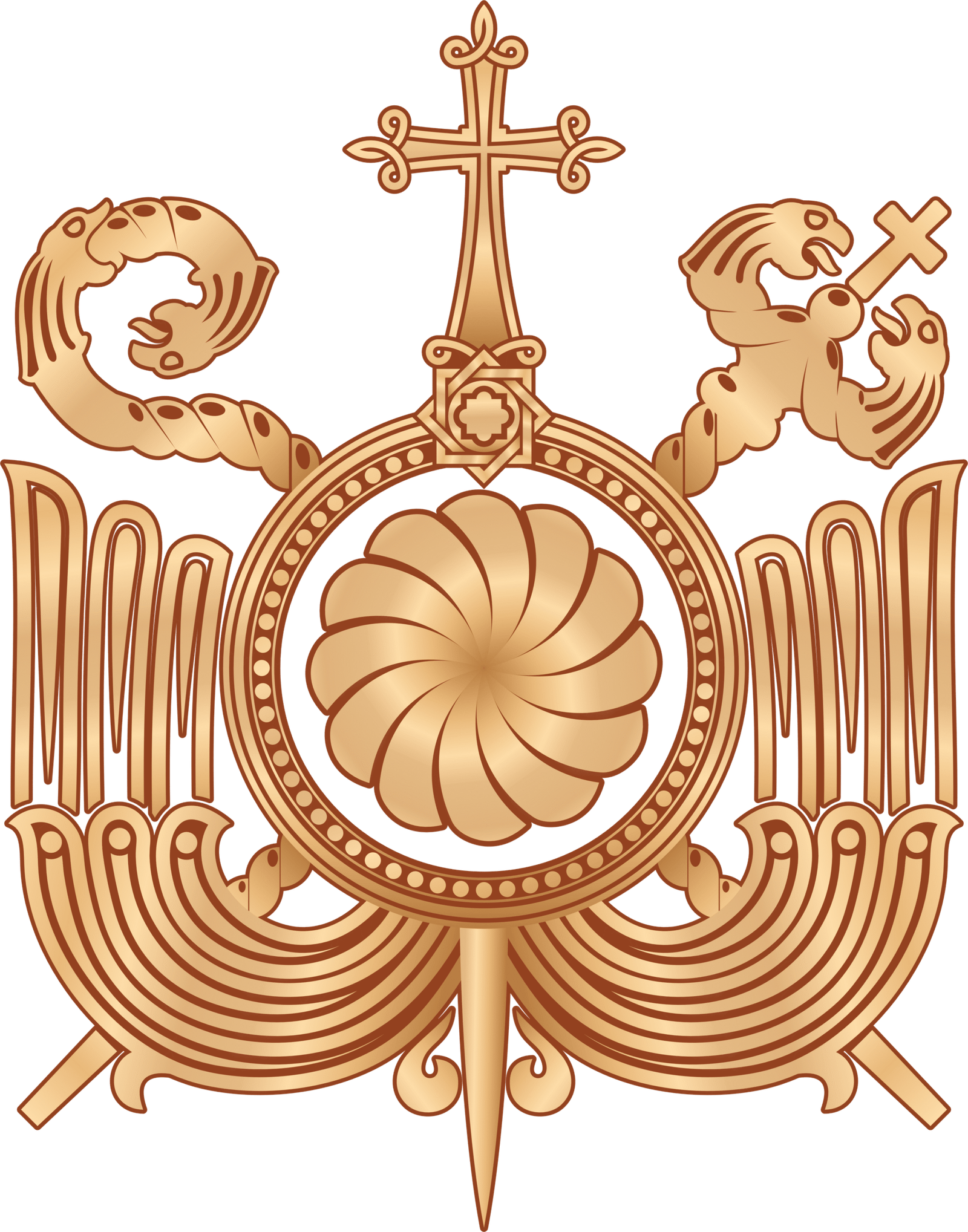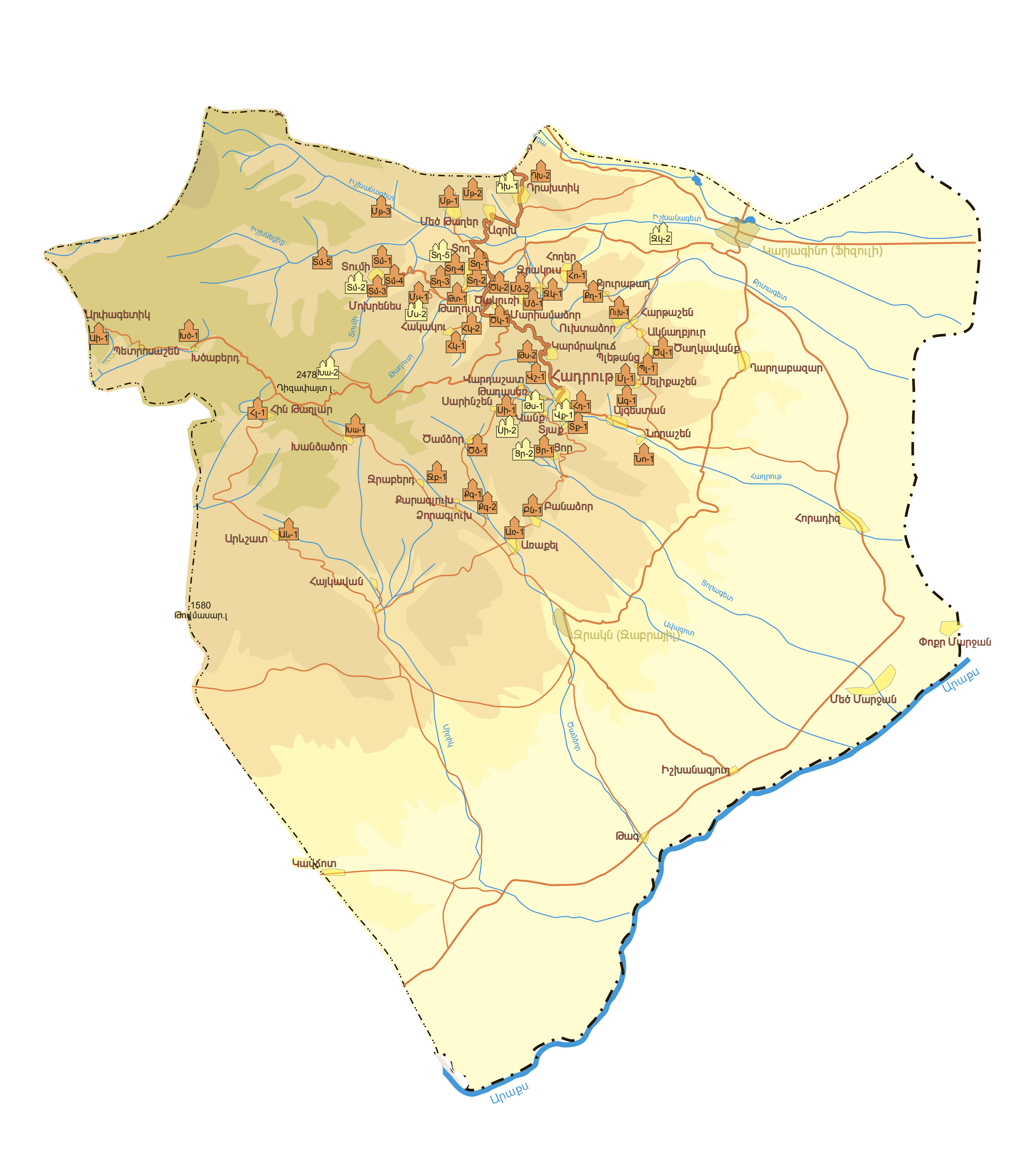Hadrut region
Hadrout is situated in the south-eastern part of the Republic of Artsakh.
The regional center, Hadrout city is situated 75 km away from the capital of AR, Stepanakert. At the end of 19th and the beginning of 20th cc. Hadrout was the second important locality after Shoushi.
Hadrout region, known in the history of Armenia under the name Dizak as well, is considered to be an open-air museum. The region is famous for a number of monastic complexes and churches, old settlements and fortresses.
Hadrout borders with Martuni, Askeran and Shoushi regions in the north and with Kashatagh region in the west. The total area of Hadrout region is a little over 1800 sq.km.
The southern boundary passes through the river of Araks. The river of Ishkhanaget, falling into the Araks, flows along the territory of the region.
The state boundary of AR with the Islamic Republic of Iran also passes through the Araks. The eastern boundary of Hadrout region is the state boundary with Azerbaijan. The southern and south-eastern parts of the region are comparatively flat. The mountain masses, covered with dark forests and alpine meadows are situated in the north and north-west.
The famous Armenian actor V. Papazyan during his visit to Hadrout said phrase that became a popular quotation: “If Karabakh is a golden ring, Hadrout is a brilliant on this ring”. As a result of 44-day war, the region was completely occupied.
| Hadrut city | Holy Mother of God church (XIII) | Occupied |
| Holy Resurrection church (1621) |
| Aygestan village | Holy Resurrection church (1741) | Occupied |
| Araqel village | Holy Mother of God church (1902-1907) | Occupied |
| Holy Mother of God church (XIX) |
| Arevshat village | Holy Mother of God church, (XIX) | Occupied |
| Arpagetik village | «Egtsundzor» church (XI-XIII) | Occupied |
| Banadzor village | Holy Mother of God church (XVII) | Occupied |
| Drakhtik village | Church in the sunctuary of «Kakhan» (XIII-XIV) | Occupied |
| Church of The Gregory of Narek or Narekavank (1645) |
| Taghaser village | «Taghaseri anapat» church (1635) | Occupied |
| Holy Mother of God church (XVII) |
| Taghut village | St. John the Baptist church (1896) | Occupied |
| Khandzadzor village | «Katarovank» monastery complex or «Holy Mother of God» (V) | Occupied |
| Holy Mother of God church (XIX) | ||
| St. John the Baptist church (XIX) |
| Khtsaberd village | «Eghtsun dzor» church (XVI-XVII) | Occupied |
| Tsakuri village | «Ptkataghi vank» church (1670) | Occupied |
| Holy Mother of God church or «Tsaghkavank» (1682) |
| Tsaghkavank village | Holy Mother of God church (XIX) | Occupied |
| Tsamdzor village | Holy Mother of God church (1696) | Occupied |
| Karmrakuch village | Holy All-Savior church (XIX) | Occupied |
| Hakaku village | Holy Mother of God church (1621) | Occupied |
| Hin Tagher village | Holy All-Savior church (XIX) | Occupied |
| Hogher village | «Hogher» church (XVIII) | Occupied |
| Mariamadzor village | St. Minas' church (1601) | Occupied |
| Meliqashen village | Holy Resurrection church (1889) | Occupied |
| Mets Tagher village | Church in the settlement of «Eghtsu art» (XIII-XIV) | Occupied |
| Church in the settlement of «Markhatun» (1603) | ||
| Holy All-Savior church (1846) |
| Mokhrenes village | St. Sarkis church (1840) | Occupied |
| Seven gates monastery (VI-VII) | ||
| Seven gates church (IX-X) |
| Norashen village | «Hin Norashen» church (1892) | Occupied |
| Ukhtadzor village | Holy Mother of God church (1692) | Occupied |
| Pletants village | St. Stephen church (1651) | Occupied |
| Jraberd village | Holy Mother of God church, (XIX) | Occupied |
| Jrakus village | «Kaqavavanq» church (end of the XVIII c , 1742) | Occupied |
| St. Stephen church (1698) |
| Sarinshen village | «Shakhkakh» church (XVII) | Occupied |
| «Shakhkakh» church (1865) | ||
| Holy Mother of God church (XIX) |
| Vank village | «White cross» monastery complex or «St. Cross» (XIII-XVII) | Occupied |
| Vardashat village | St. Hripsime church (XVII) | Occupied |
| Tyaq village | St. Mesrop church (XIX) | Occupied |
| Togh village | «Desert» church (XIX) | Occupied |
| St. John the Baptist church (1736) | ||
| «Tej» church (XIII) | ||
| St. Stephen church (1747) | ||
| «Gtchavank» monastery complex or Gtich monastery (IX-XVIII) | ||
| Kavaqavank (XIV) |
| Tumi village | Church in the settlement of «Gergech» (XIII-XIV) | Occupied |
| «King's grave» church (XII-XIII) | ||
| «Red cross» church (1000) | ||
| St. John the Baptist (XVII) | ||
| «Khuty dre» monastery complex (IX-XIII) |
| Tsor village | Holy All-Savior church (XVII-XVIII) | Occupied |
| «Desert of St. Gregory the Illuminator» church (XIII) |
| Qaraglukh village | Holy Mother of God church, (XIX) | Occupied |
| St. John the Baptist church (2013) |
| Qaring village | «Eghtsun dzor» church (XI-XIII) | Occupied |
| Qyuratagh village | Holy Mother of God church (1743) | Occupied |




